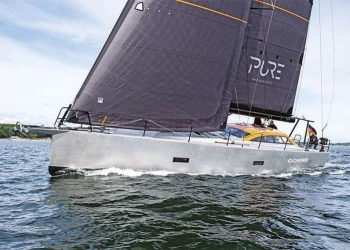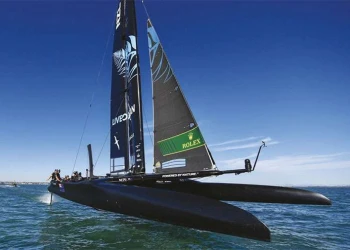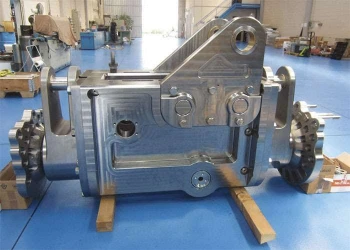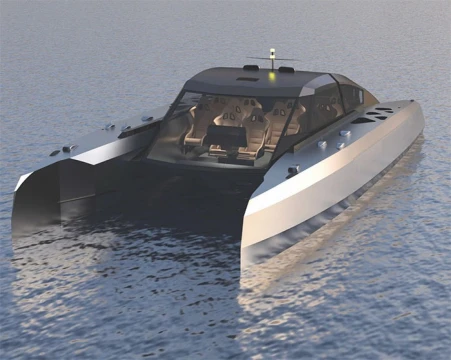
McConaghy has put the AC40 and HSV chase boat into production
McConaghy has put the AC40 and HSV chase boat into production
After building successful one-off prototypes for the AC40 and HSV chase boat, McConaghy has now put both of them into production
After the Kiwis’ impressive America’s Cup win in Bermuda back in 2017 few could have predicted how big the changes were going to be in both the Cup world and the broader reaches of the sport. McConaghy Boats have been in grand prix racing a long time; they’ve been at the leading edge of raceboat construction and have claimed many manufacturing milestones from the first prepreg laminate in a boat to the first prepreg Nomex cored maxi. But not even they had any inkling of what was going to be on their shop floor six years later. No one did.
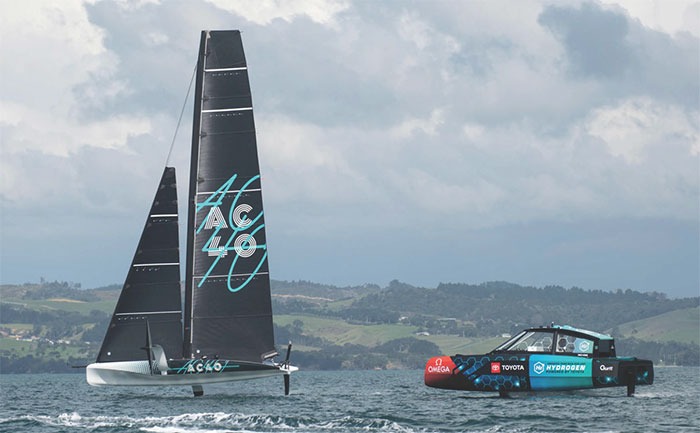
Yet, to be building 12 (and very possibly more) of the most advanced and certainly the quickest foiling monohull one designs in the world is an example of just how far the racing world has come with the AC40s.
Since taking delivery, Cup teams have been hitting speeds well in excess of 50kts during training. Few predicted that either, and few dare to guess what they might achieve when the pressure of racing for real comes to bear. But if that isn’t enough to illustrate just how advanced this new breed of boats is, try taking a look below decks.
The AC40 may have a rig and a soft sail and look much like a raceboat from the outside, but inside you might as well be looking at the inner workings of an Airbus passenger jet with its mass of hydraulic pipework, manifolds and electronics. An AC40 is a machine in every respect.
‘A lot of what we do is not very conventional, we've always been in the esoteric racing world, so building the AC40s was not a leap,’ says McConaghy CEO Mark Evans. ‘But if you compare what we’re doing with conventional yacht building, what we are producing with the Cup boats is like a Formula 1 Ferrari or fighter jet, where every single ply, every single core is designed to a certain length in a certain direction so they can operate in tightly defined load paths. So it's a very, A very technical boat and the build tolerances are to points of a millimetre.
‘There is no getting away from the fact that they are very complex systems and it's because of the close partnership between us and Emirates Team New Zealand that we're able to achieve this. They've supported us very well and given us good drawings and good procedures of how to put these yachts together. ‘Every single carbon fibre bracket, every hose length, every piece of wire has been measured in a 3D model by the Team New Zealand designers and comes to us in a kit. Basically, we set the mockup of all the hydraulics on the factory floor and because we have all the bracketry put on the boat before the equipment arrives. We just pick up the hydraulics system and install it in the boat – everything fits the way it should.
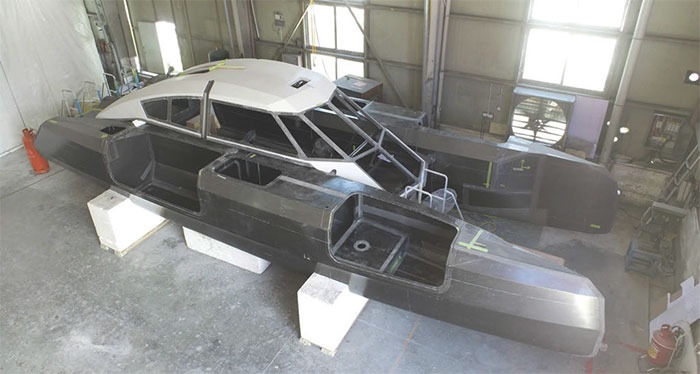
‘The result is that when they are completed in the yard – and we finish an AC40 every five weeks – these yachts are fully fired up and fully commissioned, sitting in our factory ready to ship out to the teams.’
Even more surprising, however, is that opposite the AC40 production line in McConaghy’s facility in Zhuhai, China lies an even more advanced foiling machine that is also a spin-off from the Kiwis’ foiling Cup vision: the hydrogen-powered chase boat.
Those who have closely followed the development of the Cup over the last year will know that Emirates Team New Zealand launched the prototype and were delighted at how well it worked straight out of the box. This was just as well because under the terms of the Protocol for the 37th America’s Cup, every Cup team has to have at least one, “hydrogen powered vessel (“HSV”) at the Match Venue to support its on-water race operations”.
Unless the teams want to go down their own route of development, the New Zealanders’ prototype is the answer and it's easy to see why they might opt for this McConaghy-built machine as the design brief is pretty demanding.
Under the terms of the Protocol the boat needs to be at least 10m long, have a top speed of least 50kts and be capable of cruising under hydrogen fuel cell power alone. The HSV has to be fully on its foils at 24kts and have a range of 75 miles at an average speed of 25kts, which well exceeds two back-to-back AC75 races.
On top of that, the chase boat needs to be capable of carrying six people including the driver plus 250kg of additional payload. And that’s just the headline specification. The reality of creating a hydrofoiling chase boat takes designers into challenging territory when it comes to getting cooling water back into the system. Naturally this is not a new problem, many hydrofoiling powerboats have had to deal with this over the years. But the difference with the HSV is that the foils and structures have to be slender to achieve the required levels of performance and efficiency.

‘The gearboxes, the propeller and the shaft are all custom built in-house here in Zhuhai,’ Evans continues. ‘We're using bevel gears from different gearboxes and modifying those as well. The engineering is pretty complex as we have hydraulics running down the carbon fibre front foil struts and then water going up the struts to service multiple functions. One is to lubricate the propeller shaft that's running down the vertical and keeping the bearings lubricated, another is for the heat exchangers in the boat for the motor, the batteries and other items like the air conditioning. There's a lot happening.
‘There are two water pick-ups because you have port and starboard propulsion systems on board which are running from two fuel cells that are 80-kilowatt each.’
‘We have orders from two of the teams and also we're building some of the event boats,’ he continues. ‘So we have of a total of six hydrogen chase boats that we're manufacturing at present.’
But even at this extreme end of the scale there’s more that McConaghy is working on.
‘We're doing a 13m version of the HSV and that's going to be a VIP style of boat with a really nice interior. It’s called Chase Zero and we've made a couple of alterations to improve the styling as well, such as having a cabriolet roof, a wraparound screen and a bimini. We’ve also extended the forward screen so that it is lower at the front and we have incorporated carbon compression tubes for the structure to help free up the visibility forwards.
‘The control system uses carbon fibre steering wheel control at the main console, alongside the navigational equipment, VHF, AIS, and system monitoring displays. We are also looking at producing a 12-seater version of the Chase Zero that could be either a private boat or a commercial version aimed at high-speed ferries.
‘The commercial aspect of this is really interesting. Everybody is looking at green alternatives, whether it's full electric, hydrogen or another means of propulsion. In my opinion, hydrogen is one of the best ways to go.’
All of which makes for a fascinating discussion around the detailed renderings that have been produced for the Chase Zero. But what makes this project and McConaghy’s plans all the more striking is that all of it is far from the kite flying exercise that it could so easily be. Instead, as the AC40 production line rolls into double figures, so the build of the HSVs and Chase Zero are already under way.
In just five years since the Kiwis won the Cup and changed the rules, no one was expecting this.



